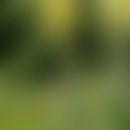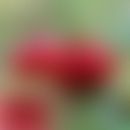Synonym(s)
DefinitionThis section has been translated automatically.
Plantaginis lanceolatae herba is the medically used, officinal ribwort herb (DAB, Commission E monograph). Plantaginis lanceolatae herba is collected at flowering time. It consists of dried, whole or divided leaves, also from flower stems and parts of the stem.
IngredientsThis section has been translated automatically.
Plantaginis lanceolatae herba contains up to 2.5% aucubin, catapol, tannins, flavonoids, about 7% tanning agents, phenyl carboxylic acids (caffeic acid), 1% silicic acid (silicon), acetoside and mucilage.
You might also be interested in
EffectsThis section has been translated automatically.
Irritant, antibacterial (effect of the glycoside aucubin which is split into glucose and aucubigenin, the actual antibiotically active ingredient), antiphlogistic (acetoside), astringent, anti-edematous.
Field of application/useThis section has been translated automatically.
Internal: Main application areas are diseases of the respiratory tract, inflammatory diseases of the mouth and throat
External: Skin injuries, insect bites
Internal: Ribwort tea or tea blends with ribwort, syrup or juice of ribwort.
Preparation: Pour 150ml of hot water over 3g of cabbage and strain after 10min. Dosage: 2- 3 cups per day. The average TD for internal use in adults is 4-6g of ribwort herb.
Ribwort extracts are mainly offered in cough syrups and syrups, often in combinations
Pregnancy/nursing periodThis section has been translated automatically.
Due to missing data an internal application should not be used.
ContraindicationThis section has been translated automatically.
No internal use in children <3 years,
Note(s)This section has been translated automatically.
The proof of antibiotic efficacy of Plantaginis lanceolatae herba requires further investigations.
LiteratureThis section has been translated automatically.
- Gonda S et al (2013) Determination of phenylethanoid glycosides and iridoid glycosides from therapeutically used Plantago species by CE-MEKC. Electrophoresis 34:2577-2584.
- Wiesenauer M (2008) PhytoPraxis. Springer Medicine Publisher Heidelberg S 116-117





